Kidepo Valley National Park is located in one of the most remote corners of Uganda to the north eastern part of the country it is one of the finest African wildernesses covering a gazette area of 1442 square kilometers towards the distant mountains in the national park, it’s an untouched place with a couple of endemic species found only in Kidepo, it was gazette as a national park in 1962 situated in Kabong district, it is tucked between Kenya and Sudan borders the scenic views of Kidepo are wonderful compared to any other nation al park in Uganda. It is placed at an altitude between 914-2,750m above sea level.
Kidepo Valley National Park is well known for harbouring a big number of wild life 77 mammal species are present in the kidepo valley and over 463 species of birds, most of the animals are restricted to the Kidepo and Karamoja region carnivores include the bat-eared fox, cheetah and aardwolf caracal, others include lions, leopards, spotted hyenas, greater and lesser kudu, zebra, Rothschild’s giraffes, bush pigs, cape buffaloes, defassa waterbucks, roan antelope, mountain reedbuck, Jacksons Hartebeasts to mention a few birds like the Abyssinian ground horn bill, red throated bee eaters, Jacksons horn bills, pygmy falcon Egyptian vulture, wood peaker, mosque swallow, grey fly catcher, the park many birds some of which are not on record.
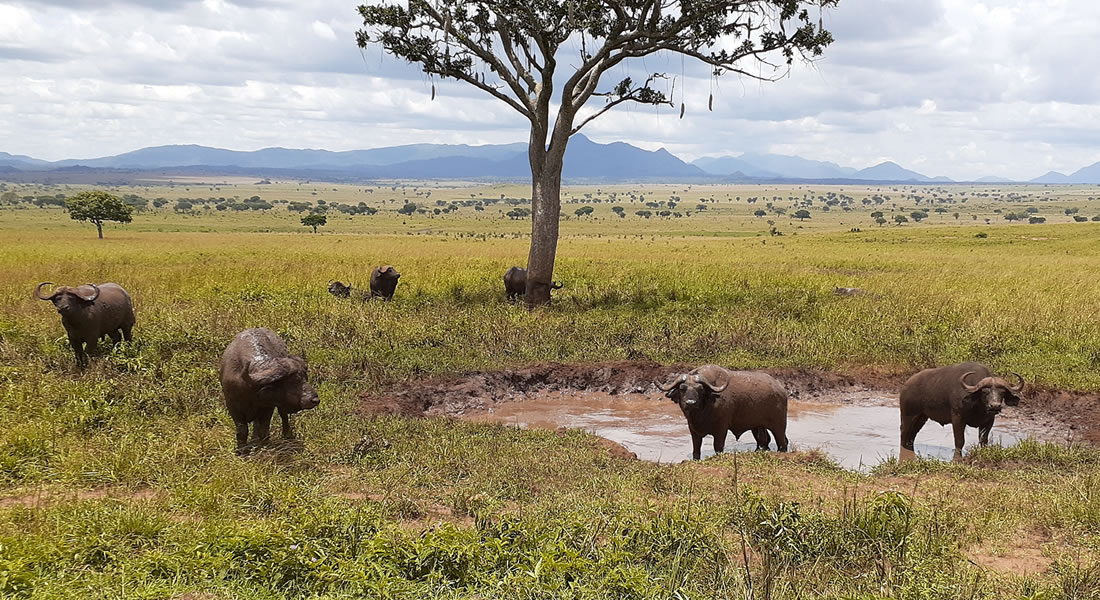
The vegetation of the park is diverse largely in habited by savannah woodland, forest and open savannah grassland habitats that dominate the national park and other perennial grasses, the borassus palms are common along the Kidepo river, hills of Kidepo are covered in dry montane forest hill tops capped with kopjes that give excellent points to search wildlife especially the cats like the lions and kilpsinger love sitting top hill. The Morungole mountain range rises from the plains a little distance from the north east of Apoka.
Kidepo Valley National Park lies in a semi- arid climatic area it’s comprised of the Narus valley and the Kidepo Valley much of the year animals concentrate around the Narus region it is well distributed with game tracks and plenty of water from the permanent rivers, pools, and wetlands Kidepo valley has a seasonal river Kidepo and most of the year tends to lack water Hot springs and beautiful sandy banks of the river covered with borassus palms are found within this area.
The park receives rainfall ounce in a year between April-September and the rainfall is light, the south Narus valley receives more rainfall compared to the northern Kidepo valley, during the dry season, the seasonal rivers dry up temperatures can go as high as 40◦c but average is about 29◦c.
Most of the people around the park are Karamojong, who keep cattle, and are adapting slowly to the new change in social life, the Karamojong believed that all the cows in Uganda belong to them and continuously raided the neighboring villages. Interested visitors can have an arrangement for them to visit the Karamojong Manyattas, see their traditional stools, spears, knives, bows and arrows, and jewelry.
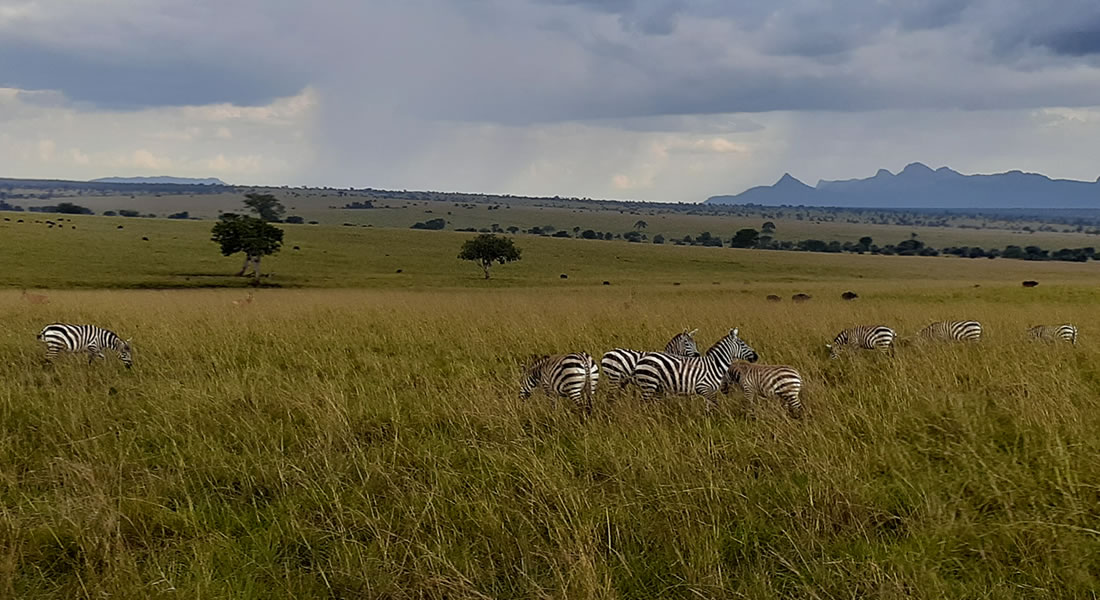
The park can be accessed all year round and can be reached by both road and air driving through the wonderful un-spoilt seen of Kidepo is very wonderful, there are four possible routes to pass via Mbale-Soroti –Moroto-kidepo, via Mbale through Kotido and Kabong, via Lira – Kitgum, or Kampala –Karuma-Gulu-Kitgum and then Kidepo each possible route takes different kilometers to get to the national park, chatter flights can be arranged from the Entebbe or Kajansi to the nearest airstrip. There is available accommodation within the national park ranging from luxury to budget, the Apoka Safari Lodge, Kidepo Savannah Lodge are most popular within the national park. Itis relatively warm and advisable to carry long sleeved light clothes, sunscreen, hats, boots and any other personal material needed for travel.
Tourism Attractions in Kidepo Valley National Park
Kidepo Valley National Park is one of the finest African destinations with a great number of animal species most of which are endemic to the region, it is an isolated park of Uganda tucked between the boarder of Sudan and Kenya on the country’s most remote corner to the north, it’s a very rewarding destination endowed with beautiful flora and fauna covering a total area of 1442 square kilometers towards the out lined mountain ranges at an altitude of 914-2750m above sea level comprising of the Narus valley and the Kidepo valley much of its animal population is concentrated around the Narus valley due to the presence of permanent water pools, Narus river and swamps as compared to the northern Kidepo valley region.
The parks flora is largely inhabited by the woodland and forest together with open savannah grassy lands, the hilly areas are covered under a montane dry forest while the water courses support acacia forest, borassus palms along a sandy beach are beautifully placed on the seasonal river bank that are worth visiting, great views of the capped kopjes gives a perfect sight for cats inclusive of lions and the klipspringer an endemic species. The park has a number of tourism attractions some of which are the major reason for visit.
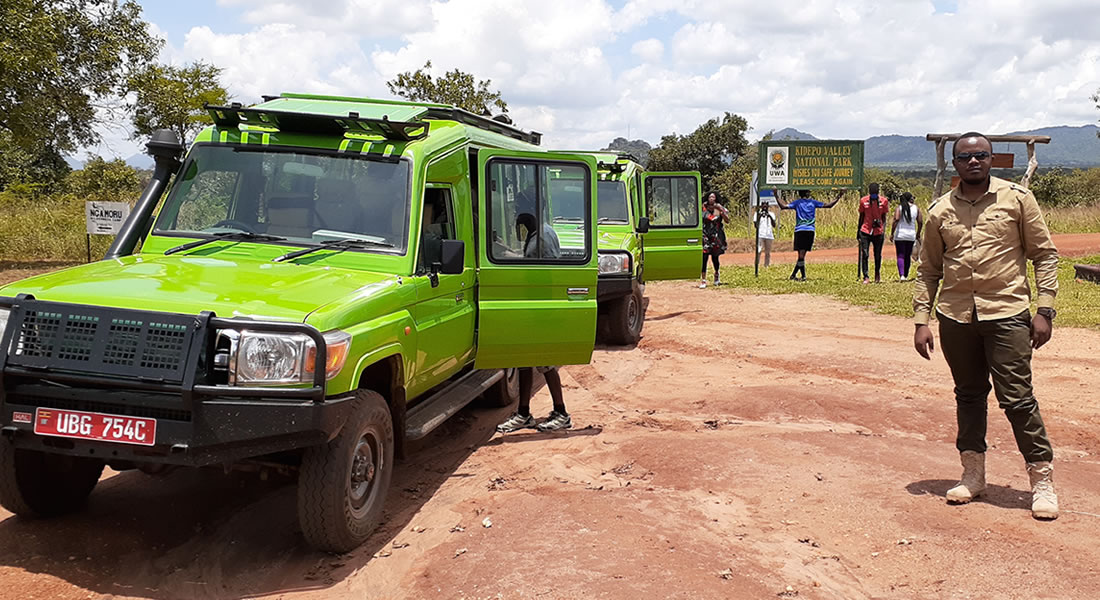
Wildlife in Kidepo Valley National Park are rare kinds of species it contains 77 species of mammals several of which are carnivores and restricted to only Kidepo these include the stripped hyena, bat eared fox, cheetah, aardwolf caracal. Other species include the lions, leopards, kilpsinger, defassa waterbuck, Cape buffalo, Rothschild’s giraffes, Jacksons Harte beats, oribi, primates like the kavirondo bush baby is present and can only be found here, elands, bush bucks, mountain reedbucks, to mention a few, it has a rich bird list recorded to more than 450 species second to the queen Elizabeth national park on a Ugandan bird list are ostrich, Abyssinian ground horn bills, Jacksons horn bills, pygmy falcon, Egyptian vulture, secretary bird, wood picker, red throated bee eaters among other species.
Apoka tourism center is strategically located near the Narus valley a place full of wild life in Kidepo Valley National Park it’s a point of tourism activity, ranger guides accompany tourists for game drives and nature walks, craft shops with souvenirs to buy, for people without their private means they can hire transport to the inside the park from Apoka, special food orders are also made at this tourism center.
Kanatarok hot springs are situated in the Kidepo valley, at most times the valley is commonly dry with no rainfall water, this implies that there are little or no animals in this region however presence of the hot springs long sandy banks of the seasonal Kidepo river toppled with the borassus palms make it worth visiting, the beauty of the surrounding environment stretching to the mountain is magnificent.
Narus valley, is well known for its animal concentration due to the presence of permanent river Narus, pools, and swamps that are water catchment areas to wildlife, its well provided with game tracks running through an open savannah enclosed by the distant mountains, it provides great views across the mountain, Morungule mountain lies north east of Apoka and can be explored on foot , there is a high chance of sighting animals like the Roth child’s giraffes, defassa water bucks, elands, Jackson Harte beasts among other species in the then Narus valley.
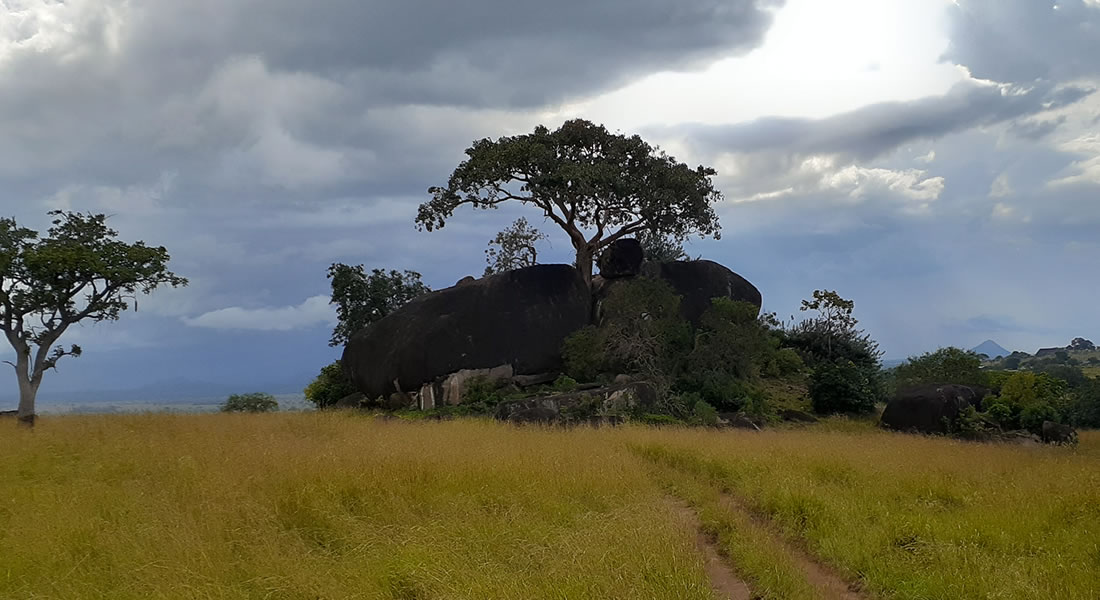
Mountains in Kidepo Valley National Park, the Morungule mountain range rises from the plains a few kilometers away from the Apoka to the north east, it can be explored on foot. The Lomej hills are relatively near the park headquarters perfect points for bird watching activity. The Lonyili Mountains is close to Kitgum near the Sudan boarder it’s a habitat for some primates such as the black and white colobus monkey and is covered under a dry montane forest.
Kidepo Valley National Park experiences a semi-arid climate situation; it can be accessed all year round, the park receives rainfall once a year and it is light rainfall. A drive to Kidepo can be through four major routes or charter flights can be organized from Entebbe via the domestic flights to the park.
Tourism Activities in Kidepo Valley National Park
Kidepo Valley National Park is located in the north eastern corner of Uganda it is one of Africa’s top finest wildlife destinations ranking with endemic species that are restricted to Kidepo, the 1442 square kilometer national park extends from Apoka running through a savannah landscape in all directions, hills are covered under the montane forest and some of the water courses support acacia forest, the hill tops are capped by rock kopjes which provide habitats for animals.
The park contains 77 mammal species several of which are endemic to the Kidepo region mammals like the bat eared fox, cheetah, spotted hyena, lions, leopards, side stripped jackal, cape buffaloes, warthogs, Rothschild’s giraffe, elands, deffassa waterbuck, elephants to mention a few, it’s a habitat to more than 450 species of birds a few species include Abyssinia ground horn bill, yellow billed Jackson horn bill, pygmy falcon, Egyptian vulture, red throated bee eaters, secretary bird among others. The spacious savannah gives a good habitat for the animal species and birds below are some of the activities taking place.
Game drives in Kidepo Valley National Park are a major activity in the national park they are done in the early mornings in search of morning risers, and late evenings through well distributed game trucks, night game drives give chance to see nocturnal species that exist within the national park these are organized on special requests. Most of the animal concentration is in the Narus valley due to presence of water for as compared to the other parts of the national park, the Kidepo valley is worth a game drive, on the scenic beautiful sandy courses from the dried seasonal rivers and the Kanatorok hot springs in the north.
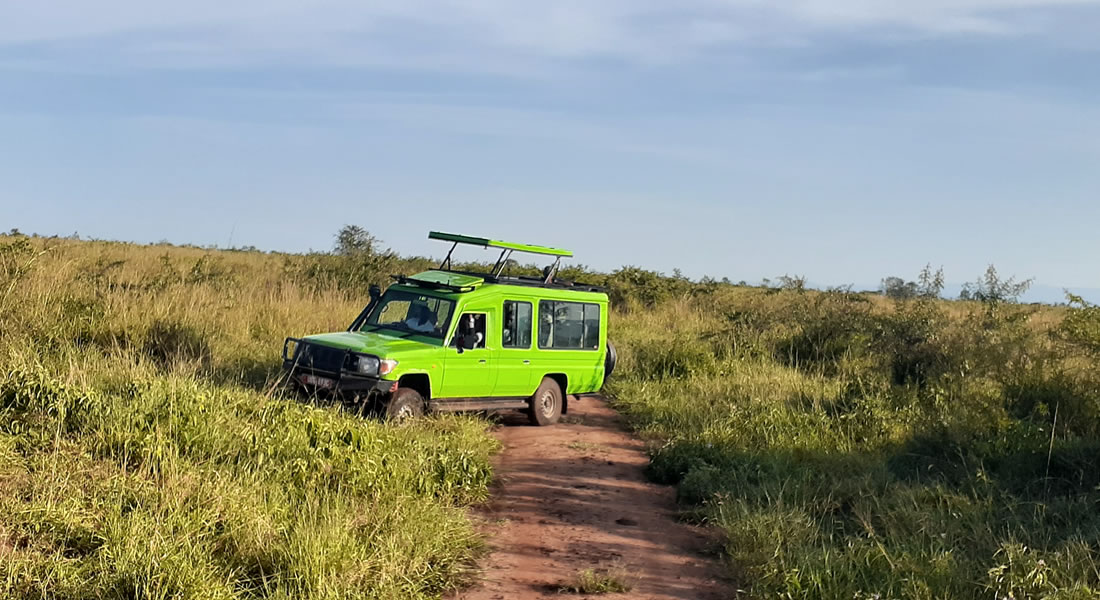
Bird watching, Kidepo Valley National Park is endowed with several species of birds second after queen Elizabeth national park, some of the birds have not been recorded anywhere over 453 kinds call this their home including the Abyssinian ground horn bill, red throated bee eaters, Jacksons horn bills, pygmy falcon Egyptian vulture, wood peaker, mosque swallow, grey fly catcher, purple heron, ostrich, kori-bustard, Apoka is a good point to start birding safaris.
Hiking to the Lomeji hills which can be reached out on foot, they are great points of watching birds it begins at 7am. Guided nature walks to Apoka tourism center and the Narus valley a lot of animals concentrate around this area presenting an opportunity to view wild life at a distance, the kidepo valley is worth talking a walk along the beautiful banks of the dry seasonal Kidepo river, borassus palms give the environment an enticing look altogether.
Visiting the local community, the Karamojong were originally pastoralists whose life is adjusting due to the modern civilization they believed all cattle belonged to them and kept on riding from the neighboring communities however this practice ended, a tour to the community can be organized pay a visit to the Karamojong Manyattas, see their traditional customs, stools, spears, head dresses, knives, bows and arrows and jewelry.
The national park is located 700km from Kampala tucked between the borders Sudan and Kenya, it can be accessed all year round via different routes by road and chatter flights can be organized directly to Kidepo from the local domestic flights. It receives a semi-arid climate rainfall is once a year. There is available accommodation in the national park the Apoka safari lodge, kidepo savanna lodge, Adere lodge among other facilities.
Where to Stay in Kidepo Valley National Park
Kidepo Valley National Park is situated in the north eastern corner of Uganda, it is an isolated park covering an area of 1442 square kilometers, and it has a semi-arid climate with only one rainy season per year the magnificent park ranks among the top Africa’s finest wilderness destinations, it is in habited largely by woodland and the forest resulting into the open savannah tree grassland that dominates the national park. Hills have a dry montane forest and some water courses support acacia forest. It was gazette in 1962 as a conservation policy to protect the animals that lived in the area.
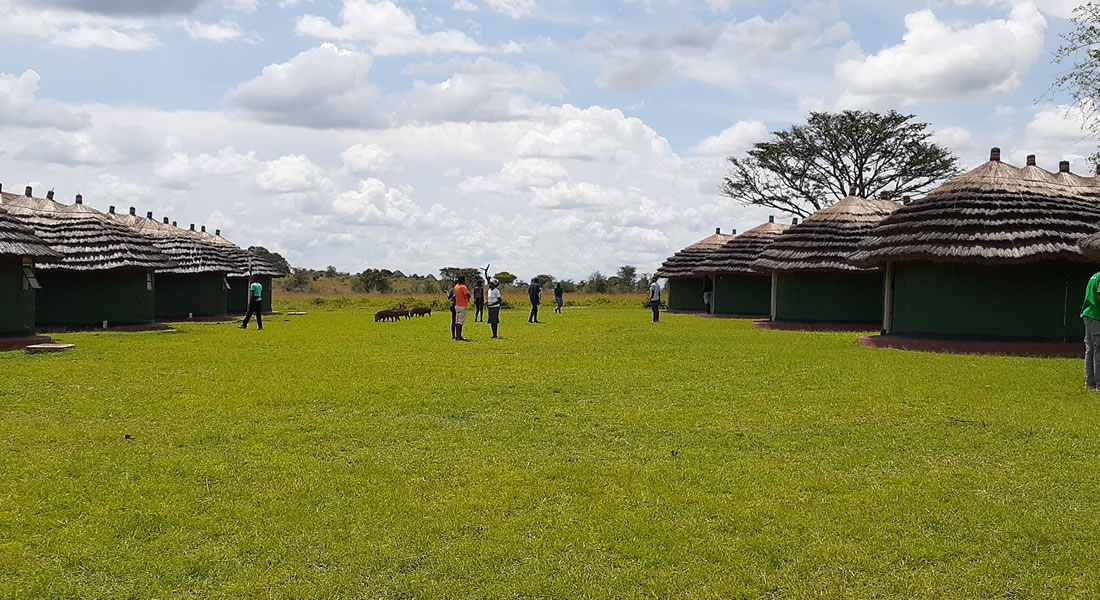
Kidepo hosts 77 mammal species most of which are endemic to the region, and over 453 species of birds listed with the highest population second after queen Elizabeth national park, species like the bat eared fox, stripped hyena, aardwolf caracal, mountain reedbuck, Rothschild’s giraffe, burchell’s zebra, defassa water buck, cape buffaloes, Jackson Harte beasts, elands among others birds like the Karamojong apalis, yellow-billed and Jackson’s horn bills, kori bustard to mention a few.
There are a number of accommodation facilities in Kidepo Valley National Park ranging from luxury to budget, including the Apoka Safari Lodge is found in the lovely kopjes overlooking the Narus valley the valley south of the national park where permanent water sources can be found there is a high concentration of animals it’s possible to scan wildlife while at Apoka lodge, the rooms were constructed and endowed with powerful beautiful pieces of art craft gotten from the local crafts men, the lodge boosts with 10 spacious rooms en-suited with sitting rooms private bathrooms, hand woven carpets, and an outdoor stone bathtub this is the only upmarket facility in the national park it’s the only lodge inside the national park. Staffs are out sourced from the neighboring communities.
Kidepo savannah lodge is situated at the edge of the national park a property of the Uganda lodgesit lies 500m from the Kalokudo gate with great views of the Narus valley and the Morungole mountain at a distance the lodge is surrounded by savannah grasslands, rocky outcrops, and the Karamojong people, the thatched dining area allows beautiful views of the surrounding environment serving 4 course mouthwatering meals. The lodge’s 12 safari tents are raised on decks and fitted with en-bathrooms.
Nga’moru wilderness camp commonly known as a place of many stones is placed near the Narus valley it is amid- range facility worth relaxing while viewing game the lodge has a fire place where you can have a camp fire the comfortable five spacious rooms contain en-suite bathrooms, and verandas overlooking the Narus valley the restaurant and bar are well equipped to meet the customer expectations.
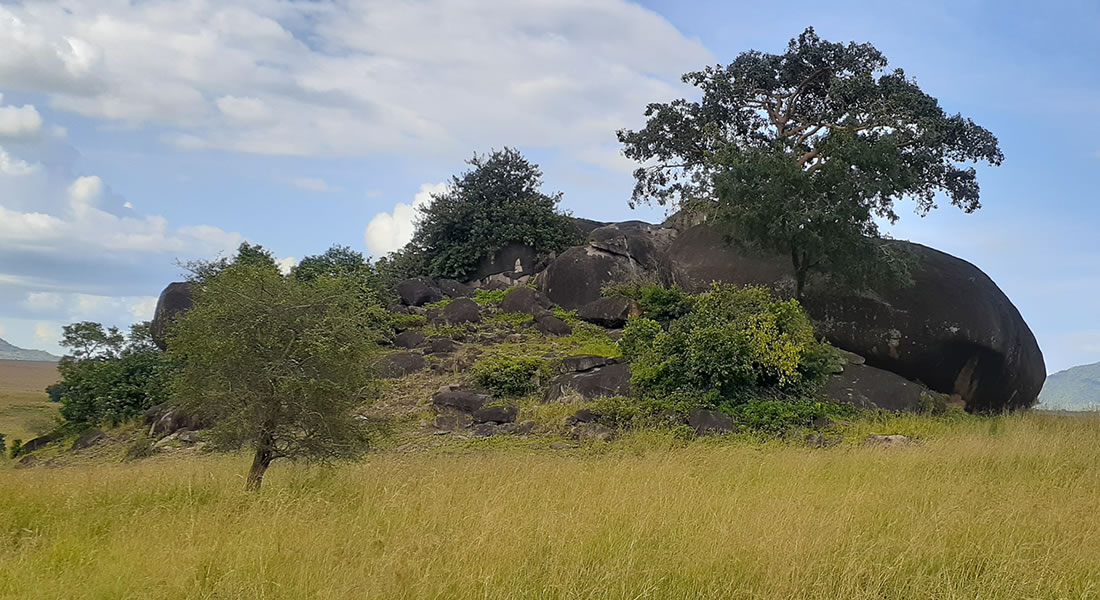
Apoka Rest Camp is managed under the Uganda wildlife authority; it is strategically located near the Narus valley where you can see the wild life, it is a budget facility with 16 self-contained rooms, cheaper bandas are also available although they are non-self-contained. Uganda wildlife authority provides simple cottages nearby at a self-catering hostel; two basic camp sites are situated near the Narus valley.
Kidepo valley national park can be accessed by road or air, driving is more scenic passing through beautiful hills, towns and villages much of the Karamojong region is unspoiled wilderness there are four routes to pass routes via Mbale pass the east of lake kyoga and those via Karuma pass to the west, chatter flights can be organized to the national park.
Best Time to Visit Kidepo Valley National Park
Kidepo Valley National Park is located in a remote corner of Uganda to the north east tucked between the border of Sudan and Kenya, it is one of the finest wildernesses in Uganda covering an area of 1442 square kilometers it is largely in habited by woodland and forest which are a result of the open tree savannah grassland that dominates the national park. The national park is a semi-arid region of Uganda. Rivers dry up in the hottest seasons to the north of the park, for the ponds that remain they act as a water catchment areas to the animals that are within the national park.
The national park can be visited all year round, despite its being dry most times, it receives at least one rainy season during the course of the year, all seasons are important as they present unique things to see at different times. Best time to visit is during the long dry season in September – march, in this time animals are easy to spot, they gather around the permanent water ponds and other wetlands along the southern part in the Narus valley. This time of the year is a peak season to tourists that come to the national park. Sometimes of this period get difficult to get clear views of wildlife as it is dusty and hot but excellent to be in the national park as there are less mosquitoes breeding and hence malaria free, the game trails are easier to pass and it is the best time to do game drives, hikes and nature walks. It should be noted that the reason animals gather around the water ponds is during this time the park is drier. Sun comes out with a few cloudy days, and endemic species like the cheetah can be sighted this time.
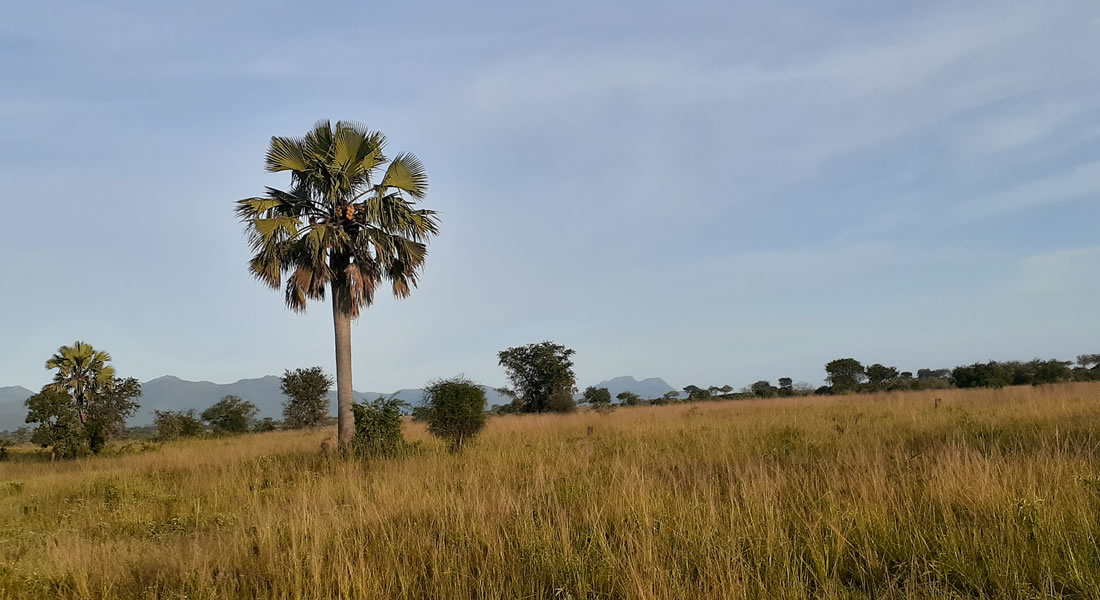
The wet season is once a year between April –September and the rainfall is light the south tentatively receives more rainfall (890mm) as compared to the north (635mm), river Kidepo is seasonal and disappears during the dry season, wildlife is concentrated around the Narus valley as a combination of water presence and the valleys open savannah habitat which makes it a prime destination for game viewing. The wet season is a blossom time for the national park, cool surroundings, and migratory birds come to the national park and can be seen, however animals move away from the valleys to drier grounds. Accommodation facilities are less expensive because it is a low season to tourists.
Kidepo valley national park contains some on the most exciting species of mammals most of which are restricted to the region including lions, cheetahs, lesser and greater kudus, elephants, zebras, Rothschild’s giraffes, cape buffaloes, bush duiker, bushbuck, Jackson’s Harte beasts, mountain reedbuck, black backed jackal, defassa waterbuck, it boosts with over450species of birds second after the queen Elizabeth national park notably is the ostrich, secretary birds, Abyssinian ground hornbills, Jackson’s horn bills, pygmy falcon, Egyptian vulture to mention a few.
The parks experiences a semi-arid climate, the vegetation climate is mostly open savannah, it can be accessed by four routes via east or west of Lake Kyoga and distance does vary according to the route taken, chatter flights can be organized to directly to the national park from the domestic flights in Entebbe or Kajansi.

